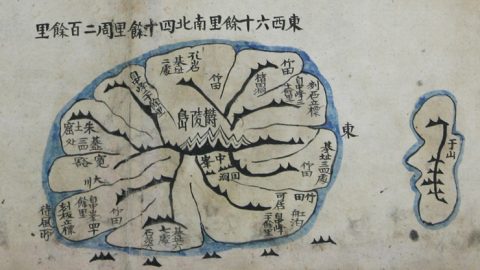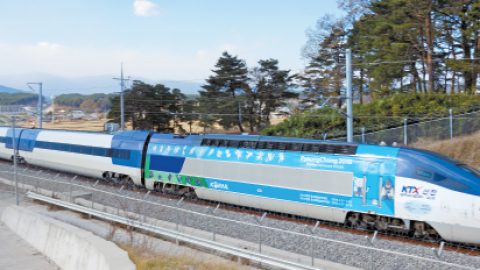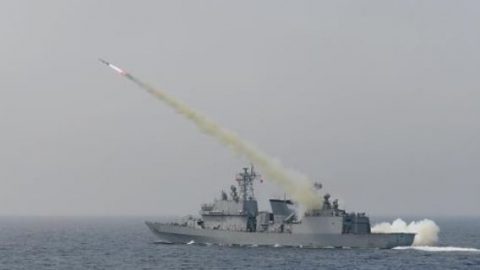Museum director prepares for Gando battle with China
By Kang Hyun-kyung
SUWON, Gyeonggi Province — If her collection of antique maps and books can help Korea have the upper hand in its territorial disputes with its neighbors, a collector says she would have fulfilled her role as a patriotic Korean.
Kim Hye-jung, director of the Kyung Hee University HyeJung Museum in Suwon, Gyeonggi Province, is a third-generation Korean-Japanese born and raised in Tokyo. In the early 1980s, she decided to move to Korea.
Today, she considers herself as a loyal Korean ready to give a helping hand to the country in its longstanding dispute with Japan.
Kim said her pride in her Korean roots has been increasing, along with her collection of old maps and books that identify the sea between Korea and Japan as the Corean Sea and that mention the country’s ownership of the easternmost islets of Dokdo.
Her interest in vintage maps began nearly five decades ago when she discovered an antique map produced by a French cartographer in the 1600s at an old map shop in downtown Tokyo. She said at that time, she was a lazy college sophomore who would often skip class whenever she felt bored.
“I was drawn to the antique map right away because it was so beautiful. It was very different from the maps that I was familiar with,” Kim, 69, said during an interview with The Korea Times on Aug. 5 in her office at the university.
Unlike functional modern maps, the old map she found there was decorative and colorful, even bearing some images of gods.
.jpg) |
| A map made by British cartographer Samuel Dunn in 1794 uses Corean Sea to refer to the body of water between Korea and Japan. |
Kim traveled extensively to Europe and North America to collect maps and historical materials that could give Korea an edge in its disputes with neighboring countries Japan and China.
She said her patriotic mission was a result of her father’s influence. Her father, who was an Asian history professor in Japan before he passed away, taught his four children to make a difference in the community.
Driven by curiosity and keeping her father’s advice in mind, Kim embarked on a journey to hunt for old maps. Today, Kim has tens of thousands of old maps now, although she doesn’t know exactly how many. Some of them are on display at the museum, while others are in storage because of the limited space there.
East Sea campaign
In 2002, Kim donated her collection to the university on the condition that the university authorities would build an independent museum exclusively for her maps and books. Until the new museum is built, the two sides agreed to use the fourth floor of the university library building for displaying some maps and storing the rest.
“I found that the majority of maps made by French, English, Dutch and German cartographers in the 1700s depict the body of water lying between Korea and Japan as the Sea of Joseon or the Corean Sea.” Joseon is an old Korean Kingdom that ruled the country for 505 years between 1392 and 1897.
That description of the body of water intrigued her because she had been taught that it was the Sea of Japan in school.
According to her, the old Korean maps are factual, detail-oriented and very accurate, whereas antique maps designed by early Europeans are colorful, decorative and imaginative. Some old European maps have the images of god and goddesses on them, which is a reflection of the cartographers’ belief that the gods created the world.
Her collection includes tens of thousands of books and historical documents showing that Korea’s easternmost islets of Dokdo has always been part of its territory. Experts say her collection will help the Korean government bolster its claims about the appropriate name of the body of water and in its territorial disputes with Japan and China.
Governments take several measures to strengthen their claims in territorial or historical disputes with their neighbors, including conducting military drills in and around the disputed territories, building scientific or research stations and visiting the disputed territories, to signal their countries’ ownership of those territories.
The possession of supporting historical data describing those areas as part of their territories can also help countries maintain their territorial claims, according to historians.
Dokdo and the naming of the body of water have been the key sources of disputes between Korea and Japan in the past decades.
Japan claims that Dokdo is part of its territory, calling it Takeshima. Its claims have been included in secondary school textbooks and key defense and diplomacy documents. Earlier this year, the Japanese government announced that it will establish a team dealing exclusively with the territorial disputes with its neighbors Korea, China and Russia to strengthen its claims over the disputed territories.
Korea and Japan also have different names for the body of water lying between them. Koreans call it the East Sea, whereas the Japanese call it the Sea of Japan. Over 90 percent of the world’s maps refer to the body of water as the Sea of Japan.
Since the 1990s, however, the Korean government has stepped up its efforts to encourage cartographers to use the East Sea along with the Sea of Japan.
In response, Japan launched a campaign to maintain the sole use of the Sea of Japan to counter Korea’s strategy and emphasize that the Sea of Japan is the internationally accepted names. It produced video clips of its claims in international languages, including English, Chinese, German and Spanish, and posted them on social media.
Japan also became concerned when Korean official Lim Ki-tack was elected as the International Maritime Organization (IMO) secretary-general in July. Japanese newspaper Yomiuri Shimbun reported that some Japanese fear the Korean leadership at the IMO may give Korea an edge in the sea naming dispute.
Kim has been working to help Korea in the naming dispute. In the early 2000s, when Korea and Japan were locked in a diplomatic spat over the naming of the body of water, Kim tried to help the government by displaying some 50 old maps drawn by Western cartographers that identified the body of water as the Oriental Sea, the Sea of Choseon or the Corean Sea.
She is now preparing to help Korea in another possible territorial battle with China. She has nearly 70 old Western maps showing that the small piece of marshland of Gando in the northeastern part of China has always been part of Korea.
Budget cut
Experts say Korea’s territorial dispute with China regarding the northern territory will flare up if the unification of the two Koreas is realized because the unified Korea will then share a border with China. Currently, the territory dispute has not yet surfaced because impoverished North Korea, which relies heavily on trade with China, is keeping a low profile regarding the issue.
Gando was Korea’s territory until Japan annexed Korea in 1909. In the Gando Convention, Japan recognized China’s claims to the region, and China has since occupied the land.
Experts say the treaties and conventions signed between Japan and other countries during the Japanese colonial rule of Korea were nullified with the end of World War II. Therefore, they predict that a territorial dispute between Korea and China will be inevitable if the two Koreas are unified.
Kim said she is excited by the discovery of old maps and books mentioning the disputed territories as part of Korea.
“Whenever I discover such maps and books, my heart beats fast,” she said. She said her collection of tens of thousands of valuable materials became possible because of her strong relationships with antique map dealers in Europe and North America.
In recent years, Kim has been focusing on the preservation of her collection. Daunted by financial losses, Kyung Hee University has been drastically cutting its budget for the museum since 2012 when the university’s founder, Cho Young-sik, passed away.
In 2002, when Kim donated her maps and books to the university, Cho promised that he would build a museum designed exclusively for her collection.
But the promise may not be fulfilled because the new university leadership has refused to follow up on it. The severe budget cuts have made it difficult for Kim to keep the storage areas for her collection at an optimum temperature and humidity.
“I feel my heart breaking and my soul being destroyed whenever I look at these items,” Kim said, pointing to books whose edges have gone brown because of poor storage conditions.
Since the budget cuts, she said she has been using her personal funds to preserve the collection. “I have no idea how long I can keep doing that,” she lamented.



